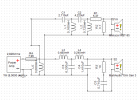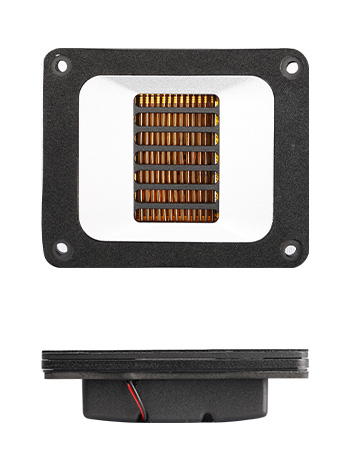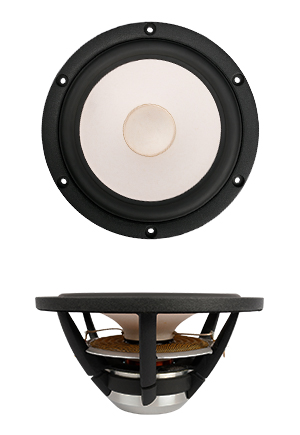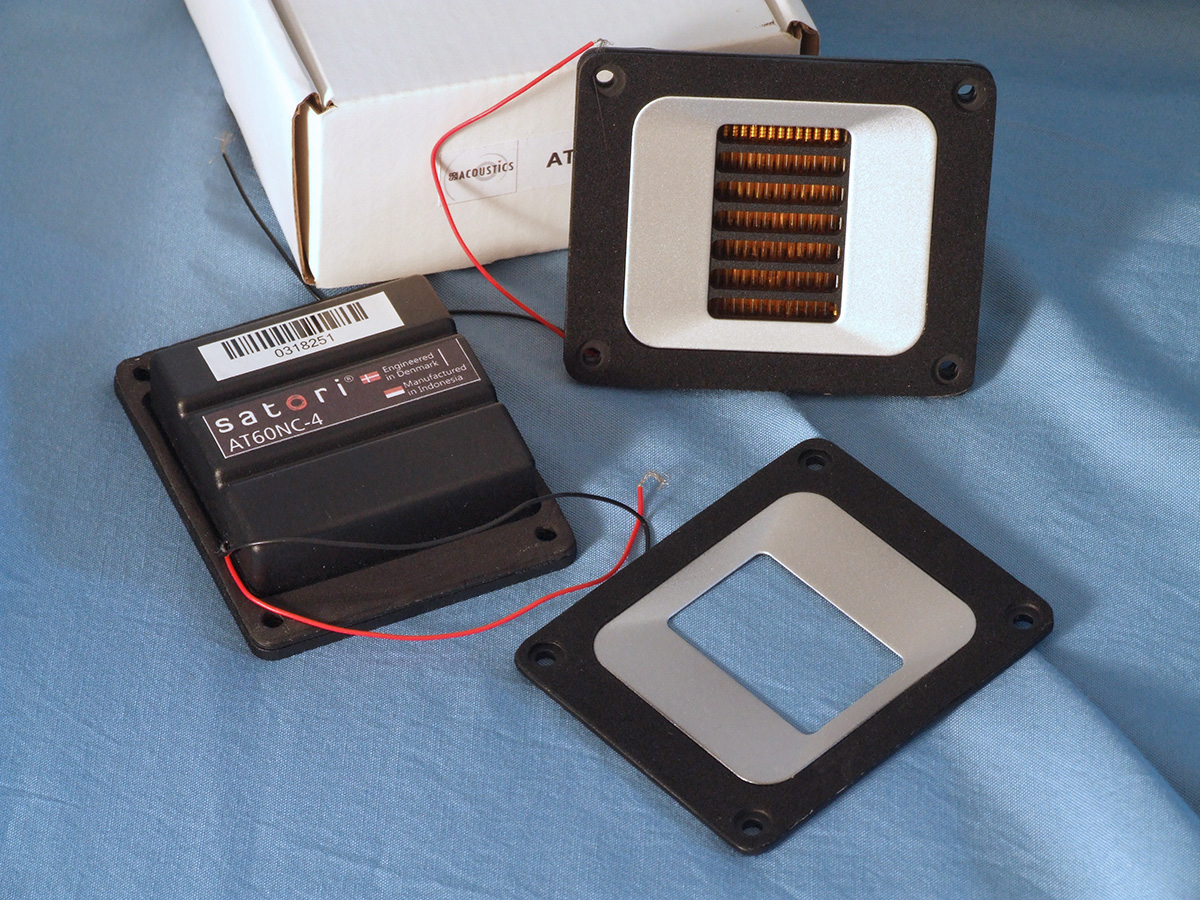AdamFrandsen
Active Member
Hi,
I am working on a small bookshelf speaker build (40x25x26.32cm) using the following drivers:
MarkAudio 10M Gen 3 Fullrange 6.5" (8 ohm nominal, 30W, voice coil ind. 71.379uH)
Monacor RBT-95 Ribbon tweeter (8 ohm nominal, 30W)
Crossover at recommended frequency of 5000Hz using 4th order Linkwitz-Riley
Zobel network for 8 ohm operation
L-Pad for tweeter with 10dB reduction
BSC at 6dB for 429Hz at 8 ohm calculated for 40cm baffle
Outer dimensions 40x25x26.32
MDF 19MM
Net internal volume of 15.2 L
Tuning freq 28Hz
Vent area 12 cm2
Vent length 26cm
Schematic attached.
Wiring Mundorf Angelique, and mundorf binding posts. DPR20-20W 1% Resisitors, and the rest of the components I am not sure of...
Some basic design consideration:
1. Coverage of Fundamental Frequencies: The fundamental musical notes range from 16.35Hz (C0 on a Bosendorfer Imperial Grand piano) up to approximately 4699Hz (D8, which is above the highest standard piccolo note). A crossover point at 5000Hz means the woofer will cover all these fundamental musical notes, ensuring that the core of the musical pitch is reproduced by a single driver, which helps in maintaining a coherent and unified sound quality for the fundamental tones.
2. Harmonics and Overtones: Many musical instruments produce harmonics and overtones that extend well above their fundamental frequencies, often reaching into the tens of kilohertz. Setting the crossover point at 5000Hz allows the tweeter to reproduce these higher frequencies, which are critical for the perceived timbre and clarity of the music. Since tweeters are designed to handle high frequencies with better precision and less distortion than woofers, this setup ensures that the intricate details of the music are accurately presented. Furthermore the recommended crossover point for the RBT-95 is exactly 5000Hz.
3. Avoiding Driver Stress at Their Limits: By setting the crossover point at 5000Hz, I avoid pushing the woofer to reproduce higher frequencies where its performance might start to fall off, and prevent the tweeter from attempting to reproduce lower frequencies for which it is not designed. This not only optimizes the performance of both drivers but also potentially extends their lifespan by avoiding operation at their respective performance limits, despite the 10m being a full range driver.
4. Integration and Dispersion: Woofers typically have better dispersion at lower frequencies, and tweeters are better at dispersing higher frequencies. A 5000Hz crossover point takes advantage of this natural division to maintain wide and even sound dispersion across the listening area.
Any input, corrections, help will be much appreciated! Would love some help on refining the schemtic and help on the actual physical layout of the crossover... Would also like input on where to best place the drivers on the baffle. Additionally the woofer is around 15 ohm at the crossover frequency, so decided to implement the zobel network at 8 ohm for more stable operation, but I am not sure if it is better to use the actual impedance at the crossover point instead and leave out the zobel network…
I am working on a small bookshelf speaker build (40x25x26.32cm) using the following drivers:
MarkAudio 10M Gen 3 Fullrange 6.5" (8 ohm nominal, 30W, voice coil ind. 71.379uH)
Monacor RBT-95 Ribbon tweeter (8 ohm nominal, 30W)
Crossover at recommended frequency of 5000Hz using 4th order Linkwitz-Riley
Zobel network for 8 ohm operation
L-Pad for tweeter with 10dB reduction
BSC at 6dB for 429Hz at 8 ohm calculated for 40cm baffle
Outer dimensions 40x25x26.32
MDF 19MM
Net internal volume of 15.2 L
Tuning freq 28Hz
Vent area 12 cm2
Vent length 26cm
Schematic attached.
Wiring Mundorf Angelique, and mundorf binding posts. DPR20-20W 1% Resisitors, and the rest of the components I am not sure of...
Some basic design consideration:
1. Coverage of Fundamental Frequencies: The fundamental musical notes range from 16.35Hz (C0 on a Bosendorfer Imperial Grand piano) up to approximately 4699Hz (D8, which is above the highest standard piccolo note). A crossover point at 5000Hz means the woofer will cover all these fundamental musical notes, ensuring that the core of the musical pitch is reproduced by a single driver, which helps in maintaining a coherent and unified sound quality for the fundamental tones.
2. Harmonics and Overtones: Many musical instruments produce harmonics and overtones that extend well above their fundamental frequencies, often reaching into the tens of kilohertz. Setting the crossover point at 5000Hz allows the tweeter to reproduce these higher frequencies, which are critical for the perceived timbre and clarity of the music. Since tweeters are designed to handle high frequencies with better precision and less distortion than woofers, this setup ensures that the intricate details of the music are accurately presented. Furthermore the recommended crossover point for the RBT-95 is exactly 5000Hz.
3. Avoiding Driver Stress at Their Limits: By setting the crossover point at 5000Hz, I avoid pushing the woofer to reproduce higher frequencies where its performance might start to fall off, and prevent the tweeter from attempting to reproduce lower frequencies for which it is not designed. This not only optimizes the performance of both drivers but also potentially extends their lifespan by avoiding operation at their respective performance limits, despite the 10m being a full range driver.
4. Integration and Dispersion: Woofers typically have better dispersion at lower frequencies, and tweeters are better at dispersing higher frequencies. A 5000Hz crossover point takes advantage of this natural division to maintain wide and even sound dispersion across the listening area.
Any input, corrections, help will be much appreciated! Would love some help on refining the schemtic and help on the actual physical layout of the crossover... Would also like input on where to best place the drivers on the baffle. Additionally the woofer is around 15 ohm at the crossover frequency, so decided to implement the zobel network at 8 ohm for more stable operation, but I am not sure if it is better to use the actual impedance at the crossover point instead and leave out the zobel network…
Attachments
Last edited:

 . Better spend the money on the drivers.
. Better spend the money on the drivers.

